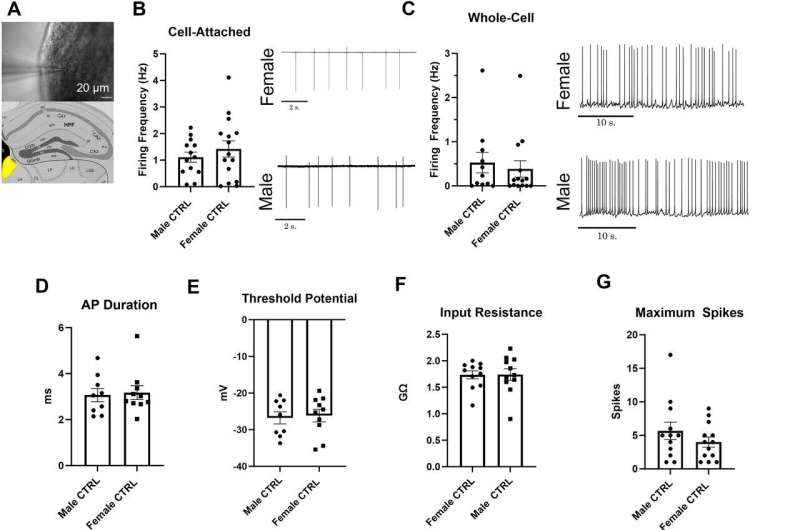This article has been reviewed according to Science X's editorial process and policies. Editors have highlighted the following attributes while ensuring the content's credibility:
fact-checked
trusted source
proofread
New study reveals dynamic impact of nicotine on brain regions responsible for reward and aversion

A new study led by researchers at the Marshall University Joan C. Edwards School of Medicine sheds light on the intricate interplay of brain regions involved in nicotine's effects on the human brain.
The research, published in eNeuro, explores how nicotine influences key areas associated with reward and aversion, showcasing a nuanced relationship that varies based on dosage, sex and distinct brain regions.
The medial habenula (MHb), a region known for regulating nicotine aversion, takes center stage in the study. Researchers discovered that MHb activity experiences fluctuations, either heightened or diminished, depending on factors such as the amount of nicotine consumed, dosage variations (with or without menthol), and the sex of the subject. Intriguingly, this modulation was not mirrored in reward centers like the ventral tegmental area, challenging previous assumptions about nicotine's impact.
"This study demonstrates that the activity of crucial brain regions associated with nicotine dependence is altered in different ways based on nicotine dosage and sex," said lead researcher Nathan Olszewski, a biomedical research doctoral student at Marshall University in the laboratory of Brandon J. Henderson, Ph.D. "Nicotine usage affects individuals uniquely, making it advisable for users to exercise caution."
The study employed a vapor-inhalation model of nicotine self-administration in mice, utilizing nose-poking to earn nicotine vapor deliveries. Employing patch-clamp electrophysiology, researchers elucidated changes in neuronal excitability in the medial habenula and ventral tegmental area based on nicotine dosage and sex. Fast-scan cyclic voltammetry was also used to assess changes in dopamine release dynamics in the nucleus accumbens.
"In our field, attention has predominantly focused on specific regions like the ventral tegmental area," said Henderson, an associate professor of biomedical sciences at Marshall University. "This study underscores the necessity of exploring other brain areas controlling the negative aspects of nicotine exposure."
The researchers aim to expand their investigation to other brain regions, particularly focusing on the interplay between the MHb and the interpeduncular nucleus (IPN). This circuit, known as the aversive pathway of nicotine usage, plays a crucial role in limiting nicotine intake and withdrawal symptoms. Future research will utilize electrophysiology, confocal microscopy and RNA-fluorescent in situ hybridization (FISH) to understand how nicotine alters the activity and expression of nicotinic acetylcholine receptors in this aversive circuit.
In addition to Olszewski and Henderson, Samuel Tetteh-Quarshie, another Ph.D. student in the Henderson laboratory, is a co-author on the study.
More information: Nathan A. Olszewski et al, Neuronal Excitability in the Medial Habenula and Ventral Tegmental Area Is Differentially Modulated by Nicotine Dosage and Menthol in a Sex-Specific Manner, eNeuro (2024). DOI: 10.1523/ENEURO.0380-23.2024



















